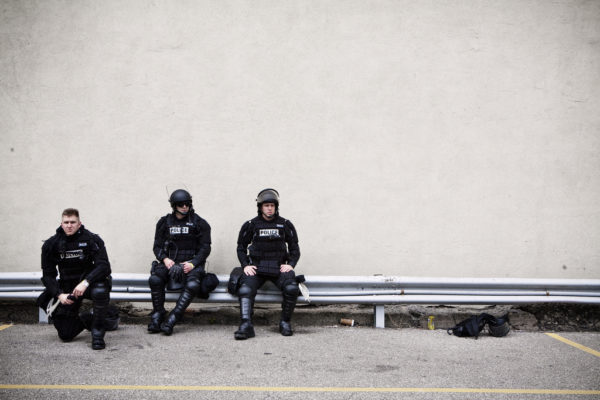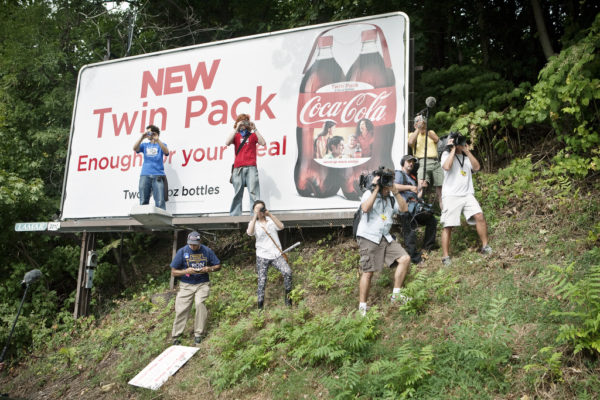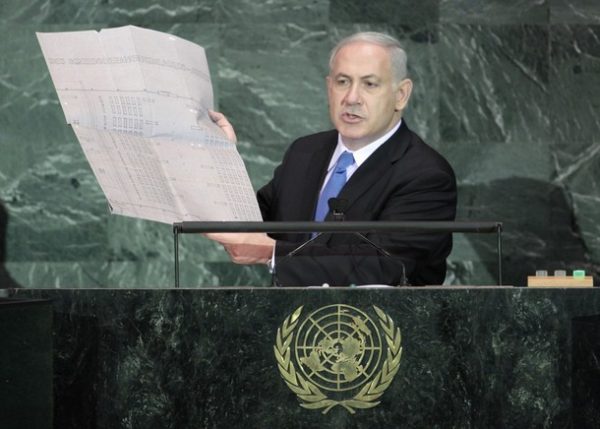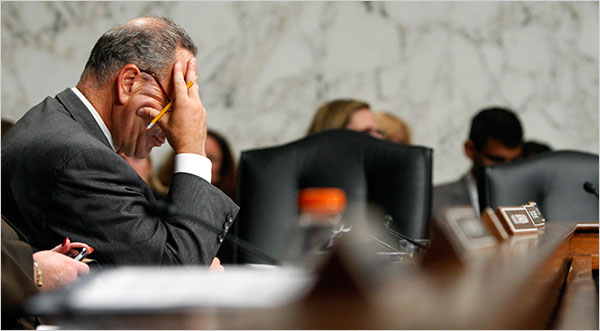Notes
Our Man at the G20 (#3): The Show Remains All Too Familiar

by contributor Robert Hariman
WTO, G8, G20, the Democratic National Convention, the Republican National Convention. These and other events provide ritual occasions for grassroots protests against the establishment. And we all know the script. Kids and cops, colorful street theater and uniformed violence, sensational coverage and claims of de facto censorship.
Last week it was the G20 in Pittsburgh: a massive police presence, storefronts boarded up along the route, not too many protesters, trouble anyway, and the usual photographs walking us through it all. The BAG’s photographer Jason Andrew was there as well, and his photos provide an opportunity to reflect on how such demonstrations are routinized, and how they are all the more revealing for that.
Many of Jason’s photographs show us what’s happening off stage. Above, three cops in full riot gear apparently are waiting to be deployed. One can see all the menace that is there, of course, but I also see three players sitting on the sidelines of a football game. Violence may be as American as cherry pie, but it also can be completely normalized, so much so that it’s hard to muster more than a feeble “go team” on either side. Or they could be workers on break (as they are) — and one is reminded how capital always turns working people against one another.
In any case, they sit in an empty, abstract space looking out of place and alienated, even there.
Jason’s photographs often have this alternative tonality from the visual cliches governing so much of the coverage. Instead of the usual street theater, you see what goes on but isn’t offered as part of the show: shopkeepers taking precautions, media personnel setting up and otherwise doing their jobs, people waiting for the next act. Instead of drama, routine; instead of politics becoming intensified, economic practices diffusing dissent; instead of the power of the people, it comes down to money and organization. Perhaps the protests are a lot like the establishment after all.
You can see that and more in this photo:

This shot of other photographers is something you see in conventional coverage, but there you are not so likely to also see a sign of global capital. Thus, another disquieting element emerges: the photos each capture an imbalanced intersection of the local and the global. Cops pose as if football players at a Friday night game, but they’re decked out in the riot gear that is now used by police around the globe. Photographers gather on a spit of land by a roadway, but when they leave, the multinational company will still be broadcasting its message.
Such images capture the pathos–some would say the futility–of taking to the streets in part of one city when fighting against global actors. But these images are not about action. Instead, the photos communicate a basic stillness, a sense of immobility. This may be thought of as another attempt to avoid the conventional focus on physical confrontation, but it also might be another way of suggesting that, at bottom, the whole show remains all-too-familiar and that nothing will really change.
My point is not to blame the protesters, other photographers, the papers, anyone. Rituals are used to maintain the established order, however, and so we’d do well to think about what these images reveal. And about how the arc of justice may need to move from the streets to the Web, and to boycotts, micro-loans, urban gardens, labor unions (dare we speak the name) and more.
And to photographs showing us what else might be possible once people stop following the old script.
Cross-posted at No Caption Needed.
(images: ©Jason Andrew/BAGnewsNotes. Pittsburgh, PA., September 25, 2009)


Reactions
Comments Powered by Disqus